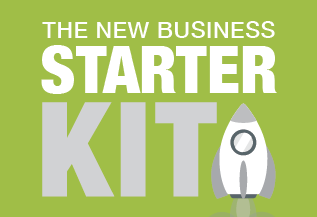3 Steps to More Online Traffic,
Leads and Sales
 In the last few years consumer behaviour has changed. We now buy books, music, electronics, shoes and clothing online. In fact, you can buy almost anything online and people even buy professional services online including accountancy services.
In the last few years consumer behaviour has changed. We now buy books, music, electronics, shoes and clothing online. In fact, you can buy almost anything online and people even buy professional services online including accountancy services.
Your website has become a key member of ‘staff’ and they work 24/7 as your silent sales person. Unfortunately, most websites are simply ‘electronic billboards’ that list the who, what and where of the business. A recent blog I read described owning a poor performing website as like owning a Leyland P76 car (the car referred to by the 1970's Prime Minister, Gough Whitlam as a “dud” and the car Bill Hayden famously called a “lemon”). Trying to fix your ‘lemon’ of a website could be sending good money after bad but before you park your website on the scrap heap you might want to try some simple running repairs.
Below are three tips to help you fine tune your website that might get your marketing engine running smoothly again and attract more traffic, leads and online sales.
1. Add a Lead Magnet - Most websites assume every visitor is ready to buy. Wrong! The ‘contact us’ page is there for a reason but not all visitors are ready to buy from you on the first ‘date’. Statistically speaking, less than twenty percent of your website traffic is in ‘buy’ mode. You need to have a strategy to engage with the eighty percent of visitors who are just browsing. Humans move through stages when buying products or services online. The three phases are awareness, consideration and then decision (to buy).
How you handle these shoppers can make or break your business and the challenge is to capture their contact details so you can add them to your marketing pipeline. The most effective way to persuade them to handover their contact details is to offer them something of value in exchange. A lot of your website visitors want to learn more about your product or services before they buy. They are still doing their research, gathering facts and figures so they make an informed purchase. The most common technique to capture them is offer them some educational content that could be a free report, white paper, guide, e-book or product sample.
People who download content from your website then become leads that you can nurture through the sales process. You need to give them something valuable so they want to come back to your site, re-engage and ultimately buy from you. The content that keeps them interested in your business could be in the form of a regular email, specific offers, a video or your blog articles. Content marketing is king!
2. Add a Call To Action Image - The objective is to get the attention of prospects who visit the home page of your website. By creating an eye catching image for your ‘call to action’ you can promote your piece of educational content. Tell visitors what to do next and make the image prominent. Key phrases like ‘get instant access’, ‘click here for your free copy’ or ‘free sample’ need to stand out. Of course, the challenge is to make the content irresistible and valuable so your prospects hand over their contact details in exchange. They then enter your marketing machine.
3. Add a Video to your Home Page - YouTube is now the second biggest search engine behind Google and videos are a big part of the future of content marketing. This is particularly the case if your target market is the younger generation. Let’s face it, most people have a smart phone in their pocket and they double as a mini television.
Having a video on your home page grabs the attention of visitors and can help ‘sell’ your business story. It breaks up the monotony of just text and is a must have item. Add sound and music to the visual images and you can captivate your prospects. It might get them to stay on your site longer and explore more of your content.
There’s more features like a blog and social proof that could also help you win more website traffic. Make sure your home page tells your target market how you can solve their problems and make their life better with your products and services. Resist talking about you on the home page because visitors don’t care about you. When writing the content put yourself in their shoes and focus on what’s in it for them. Don’t talk about ‘we and us’, talk about ‘you and your’.
If your website has stalled or resembles a rusted old Leyland P76 then work through the list of ‘must haves’ above and stay tuned for more ideas in future blogs.




.png)








